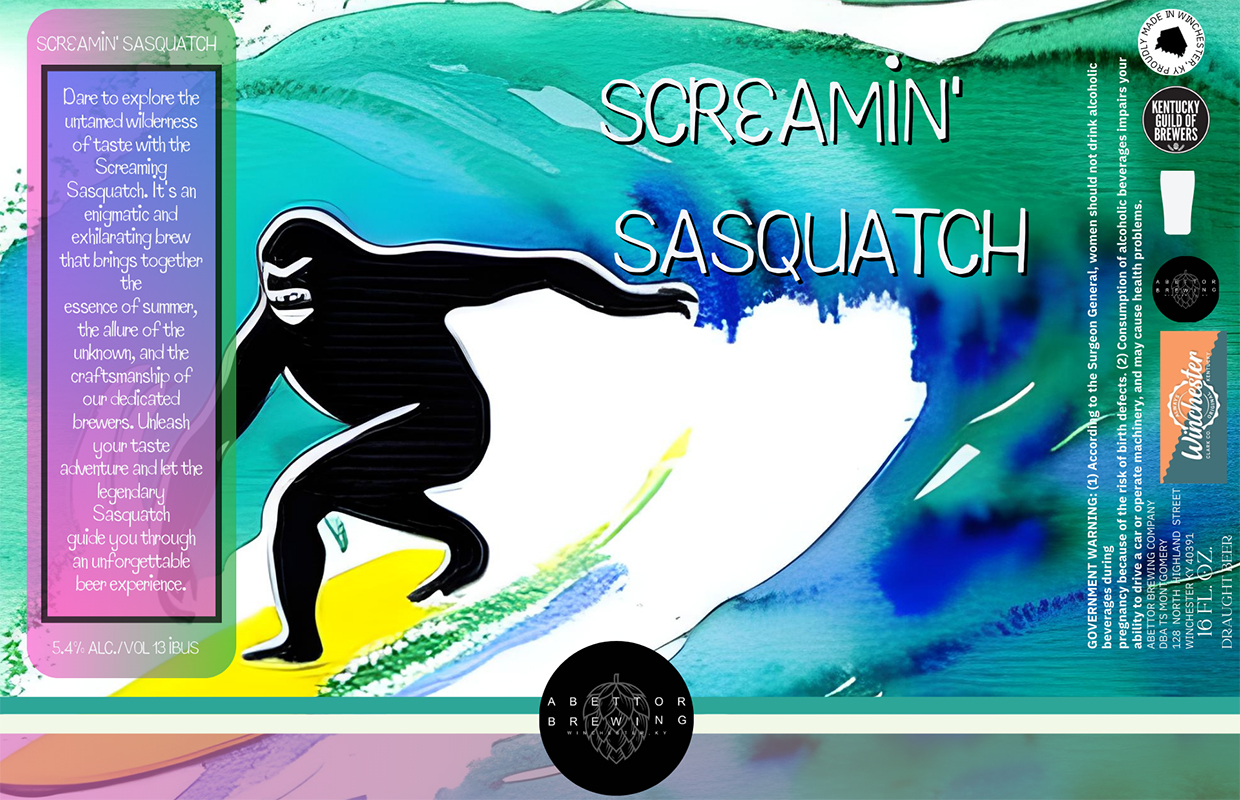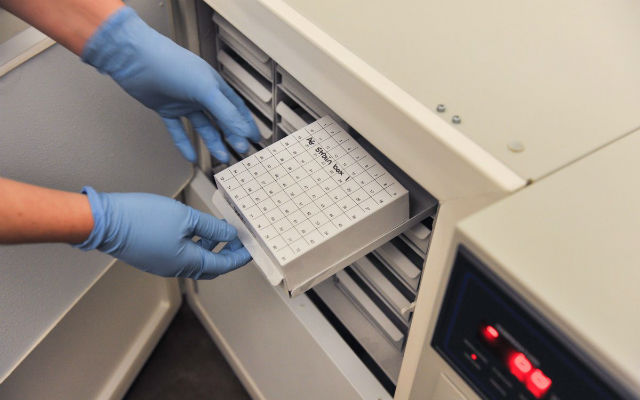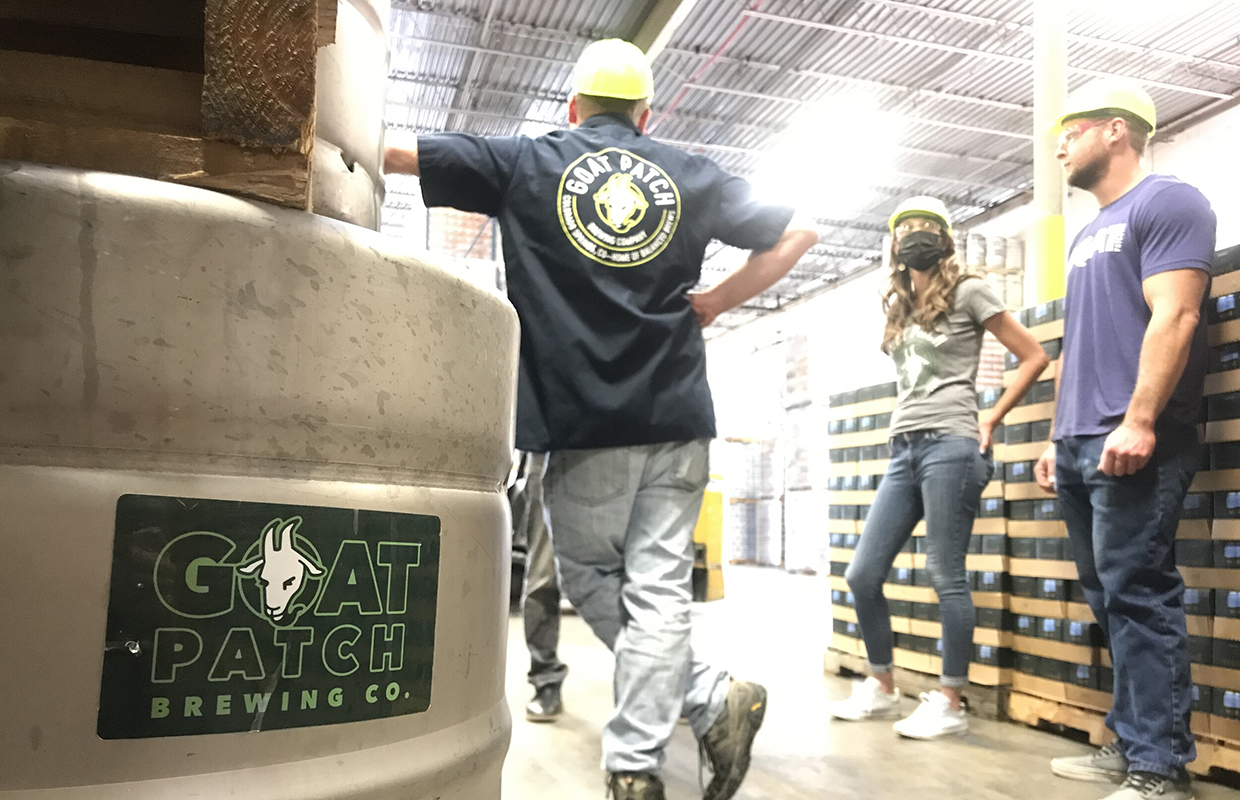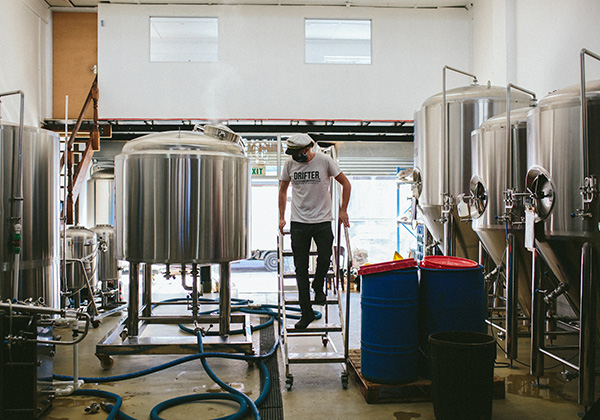
For John Howard, running a taproom and social media for Abettor Brewing can take up a lot of time. Utilizing artificial intelligence like Chat GPT wisely has helped the Kentucky brewery’s manager find better ways to use his time during the day to do what he wants to do: better a customer’s experience.
From beer descriptors and social media posts to finding gaps in the company’s SOPs, using a tool like Chat GPT has helped give Howard more time to focus on little things that may have slipped through the cracks or put on the back burner before.
“My role at the brewery has evolved from taproom manager to kind of a “everything manager” except for brewing,” he said for the brewery, which is Brewer Magazine’s “Test Kitchen” location. “I was doing so much, I’m able to get back into paying attention to the small details that are customer centric and customer perception, which is very important obviously.
“I’m able to get into it more — because I’m spending less time staring at a screen and trying to come up with stuff for social media — I can pay more attention to repairs, cleaning tasks and I’m able to be more centric to our employees and cater to their needs and be more there as an on-shift manager and not spending so much time just staring at a screen doing social media and beer your labels and writing policies and all that kind of stuff. So it helps me be more present on the front side of the business. It’s like having another person that knows everything that’s done every job you’ve ever could want for the last 100 years. It’s great for that, for sure.”
LISTEN: Hear the Complete Interview with John Howard
Of course, he was wary at first and jokingly told Brewer he watched too many movies like Terminator to have him shy away from using AI. However he has delved into using it more this summer and is seeing the benefit as helping free up more time for other duties.
Here are a few ways in the past few months Howard has used Chat GPT as a tool in everyday use.
Beer Labels & Descriptors
One of Abettor’s beer lines is the White Ale Yelling Yeti in the winter and Screaming Sasquatch in the summer. Finding art for the label was hard to find, Howard said.
“I could not create an image with the programs I use for myself,” he said. “I’m not good at Illustrator, Photoshop and Publisher. So I went to Chat GPT to try to find a screaming Sasquatch. I used prompts like “metal Sasquatch playing guitar,” “Sasquatch on a roller coaster” … anything to get a screaming Sasquatch to generate the image. It was great except everything that it came up with originally was terrifying, like out of a horror film. After messing with it enough, I was able to find a suitable one of a Sasquatch having a good time.
As he got more familiar with the program, now Howard uses AI for even beer descriptors.
“It’s so hard to write those things, especially with a person’s palate being different,” he said. “I can write a beer prompt like: “for a craft brewery, a peach Blonde Ale brewed with pale malt, two row, Cascade with peach puree in X characters” it will write me a description and then I can go in and pick and choose the information that I want and change it to be specifically what we need for the brewery.
Howard said he can get a 500-word description in a few seconds that would have taken him an hour to write or figure out and edit.
“I’m not the best editor in the world,” he admitted. “So it’s already grammatically correct and it’s already edited and everything is squared away there for me so I don’t have to do that. I just have to make sure the content matches exactly what we need. You can captivate the audience by giving them the story of the drink or the beer.
Documentation in the taproom
All of Abettor’s SOPs, including documentation, policies, employee handbook, and internal documentation were things that Howard created on his own.
“I was able to go in there and write a policy for a craft brewery,” he said. “Since it has the entire internet, and it learns, it just pulls the most common collective things that you see across all companies that had those documents online, and it gave me an entire SOP for all those things.
“I was able to take that and pull out the things that didn’t apply to us and add things that weren’t there. A lot of it was stuff that I hadn’t included already. So it was really able to help me enhance the documentation that we already had in place and make it more all encompassing, opposed to just what I had in my head.”
Social Media
This utilization, Howard said, is the biggest time saver right now.
“I’m still kind of testing this to see how people respond to it,” he said. He has utilized it to create daily posts under 300 characters or less.
“I tell it: This is what we do every day, Monday, we have this food truck and this is the event, Tuesday, etcetera, etcetera. And it will write the entire post for every day of the entire week,” Howard said. “Then I could just go in and pick and choose and change stuff. But that saves me from going on there and having to write that post because we do two or three posts a day, every single day, all week. So that saves a ton of time, too.”
Adjusting it to “speak like you” needs to happen, he noted.
“I don’t speak the same as the Chat GPT, it doesn’t speak like me, obviously,” he said. “It doesn’t have the cultural influence or the socialization aspect. So it’s pretty straightforward. I don’t know that anyone can tell the difference, but if you look back on our Facebook page. I’ll tell you the biggest indicators are I’d never use emojis. So all those emojis that are there, that’s all chat GPT stuff that I haven’t changed.
“I did that for a week or two just to kind of see if it made a difference in how people respond, if it’s more engaging or not. And then I’m going back to just regular, more simple posts. Because our policy before was outside of events and beer release posts, they need to be short, sweet, and simple. And I thought maybe if we did something like this, we would get more engagement. I was curious to see if this robot, the way it talks and types stuff out, if people would be more engaged with it. And so far, I don’t think it has anything to do with myself or Chat GPT but it’s about the same.”
That shows that it can help increases your productivity but it doesn’t necessarily mean it’s going to increase your visibility.
“It’s less work for the same result,” he said. “Which is what everybody wants, right?”




Be the first to comment